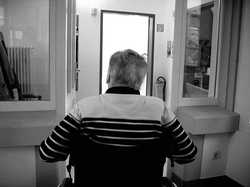
Nursing homes in the United States continue to use physical restraints even though the risks of serious injuries are well known. Often used to make the work of caring for patients “easier,” the restraints can negatively impact the nursing home resident’s physical and mental health. When nursing home staff use these devices against medical advice or contrary to the directives of family, they may be guilty of nursing home abuse.
Types of Restraints
There are many types of restraints that may be used in nursing home facilities. These include lap trays and wheelchair belts. These are designed to limit a patient’s mobility during transport, as are arm and leg restraints that are designed to keep patients from leaving their beds. Vests and soft ties are commonly used to prevent residents from inflicting self-harm, and bed rails are used to help prevent residents from rolling over in bed.
Physical and Emotional Suffering
Physical restraints can cause significant injuries to nursing home residents including cuts and bruises. They can also increase the risk of infections, bedsores, and strangulation of the resident. Additionally, restraints can cause significant emotional and psychological trauma. These injuries can result in long-term suffering including the development of depression, anxiety, and symptoms of post-traumatic stress disorder.
Informed Consent
Nursing home facilities are required to obtain informed consent from the individual’s legal guardian before restraints are used. This requires a full and complete explanation of why the individual needs to be restrained, and for how long. It also requires nursing home staff to inform the individual’s guardian of the potential risks and hazards associated with the procedure.
At no time is a nursing home facility allowed to restrain a resident to punish or discipline the individual, make patient care more expedient, or to control the patient beyond basic measures designed to protect the safety of the patient, residents, and staff.
However, many nursing home facilities ignore these requirements. Some argue that the need to restrain the patient makes it impractical to contact the individual’s guardian beforehand. This is a legal violation. It is also a deliberate violation of the duty of care to residents. Victims who suffer this type of abuse can file a nursing home abuse claim against the facility, individual staff, and any physicians who were involved in the restraint procedure.

